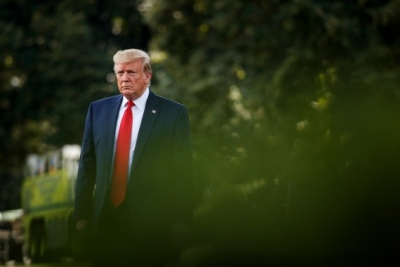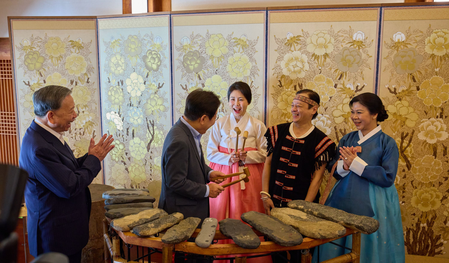
Washington: Donald Trump threatening a 50 per cent tariff on India for buying Russian oil would not scare India – a country with its 5,000 years of history which has survived British colonialism. Due to high trade barriers, Trump had imposed 25 per cent tariffs on Indian goods. On August 6, he imposed an additional 25 per cent tariff on Indian goods as India continues to buy Russian oil.
Trump knows what India does not like. New Delhi should not fall to his bait. India’s economic sector is buoyant enough with the government drawing a red line in sensitive areas such as agricultural products and dairy including genetically modified (GM) foods. Further, the government has kept the supreme interests of Indian consumers when it comes to oil purchases. The US, meanwhile, is demanding zero duty access to all its products into India, unwilling to offer any concessions on sectoral tariffs, such as 50 per cent in case of steel, aluminum and copper and 25 per cent for automobile and auto parts. Trump has levied additional punitive tariffs to clinch deals.
Trump’s inexplicable and autocratic tariff policies may deepen the impact on labour intensive sectors in India’s economy like chemicals, apparel, textiles, gems and jewellery and footwear. The Reserve Bank of India (RBI) has projected a 6.5 per cent GDP growth for the 2025-26 FY. Prospects for agriculture and manufacturing sectors are bright with investments gaining traction. India’s strategic autonomy, balancing its multi-alignment policy amidst a volatile international political landscape and international trade policy could be a signal in offering more jobs at home by increasing demands. India can do a lot to redesign its economy with reforms attracting investment and can rival China in manufacturing.
Renowned industrialist Anand Mahindra had called for a bold and strategic response from India. He had urged the government to radically improve its ease of doing business with a truly single window clearance system for all investment proposals, which could propel India to the top 50, inviting USD $100 billion in FDI by 2030. Prime Minister Narendra Modi’s call of “first be vocal for local, then go global” boosting small businesses will help in neutralising the impact of tariffs to ‘Make India Great Again’. Experts reckon that, in some cases, there should be 100 per cent FDI like in road transport, water conservation, sanitation, rural infrastructure, defence, S&T with complete technology transfers generating more employment by the year 2030.
Technology, including AI, is India’s secret weapon. Under PM Modi’s vision, India has emerged a global leader in AI, transforming its digital ecosystem. The government has established four AI centres of excellence in agriculture, education, health-care and sustainable cities driving collaboration among academia, industry and government advancing specialised AI applications. India’s technological firms need to increase investment in R&D, at least two per cent of revenue.
Economists have underscored that there may be marginal downslide striking India’s economic growth owing to its diversified trade around the world. Presently, there is no forward movement with regard to some of the big-ticket items to be purchased from the US like Stryker armoured combat vehicles, Javelin anti-tank missiles, six Boeing P8I reconnaissance aircraft and support systems. Defence Minister Rajnath Singh’s scheduled visit to the US at the end of August has also been deferred.
India has termed Trump’s tariffs as unfair and unjustified. The US President believes that America has been the victim of the system and the ‘Make America Great Again’ (MAGA) movement is shaping the narrative with great success. Undoubtedly, through June the dollar has been falling, making it the worst first half since the onset of Nixon breaking the Bretton Woods gold standard and abrupt oil crisis in 1973.
The MAGA narrative is based on a series of assumptions and exaggerations. Trump is using tariffs to encourage the American taxpayers to buy more American products. In Trumpism, policy is an afterthought. Trump has used tariffs by threatening the trade partners to agree to deals that benefit the US. In fact, the US actually gained two million jobs, which are not low paying or at fast food centres. America’s median household income has risen by 50 per cent, hourly wages have increased, even with a China shock. The MAGA has been an effective political tool and the American public and the taxpayers should have considered what Trump could have extended to them in his second term.
The renewed American interest in Pakistan might be less about oil than access to minerals and rare earths. Quite shockingly, Trump even had lunch with Pakistan’s Chief of Army Staff, General Asim Munir on June 18. With vacillating relations between India and the US, Munir’s hate-filled threats and nuclear sabre-rattling against India from Trump’s home state Florida was not even condemned by the US administration.
(The writer is an expert on South Asia and Eurasia. He was formerly with Manohar Parrikar Institute for Defence Studies and Analyses. Views expressed are personal)
–IANS
/as




